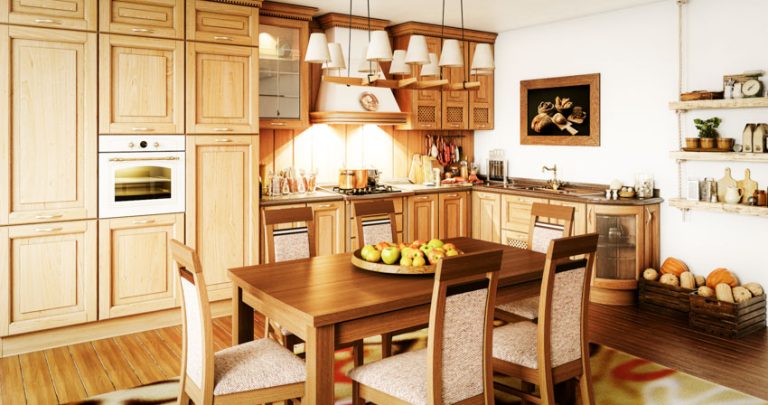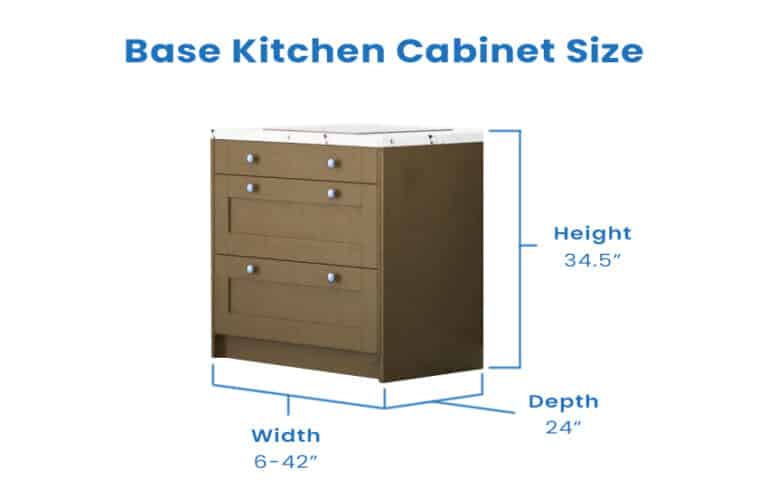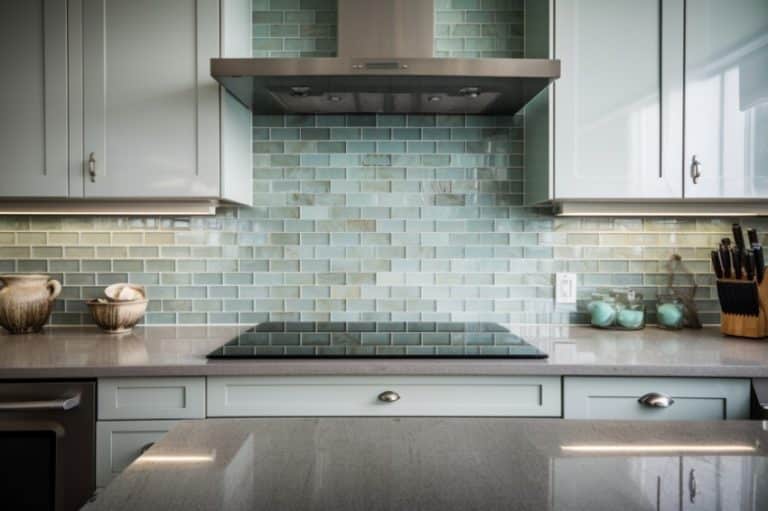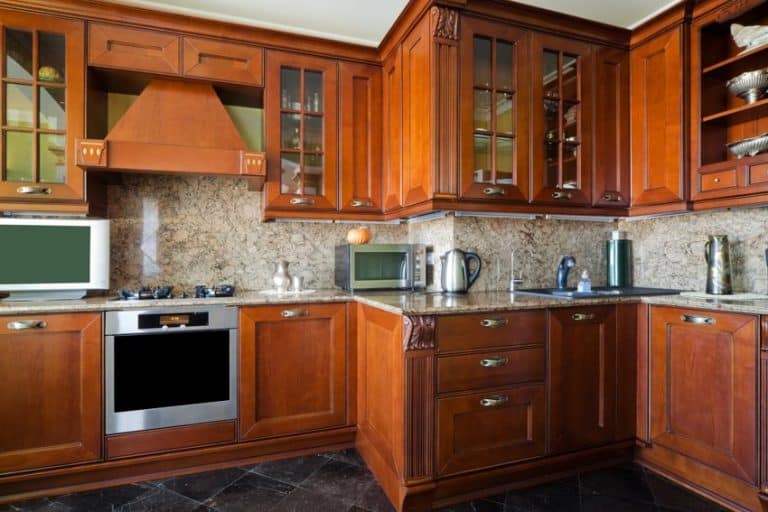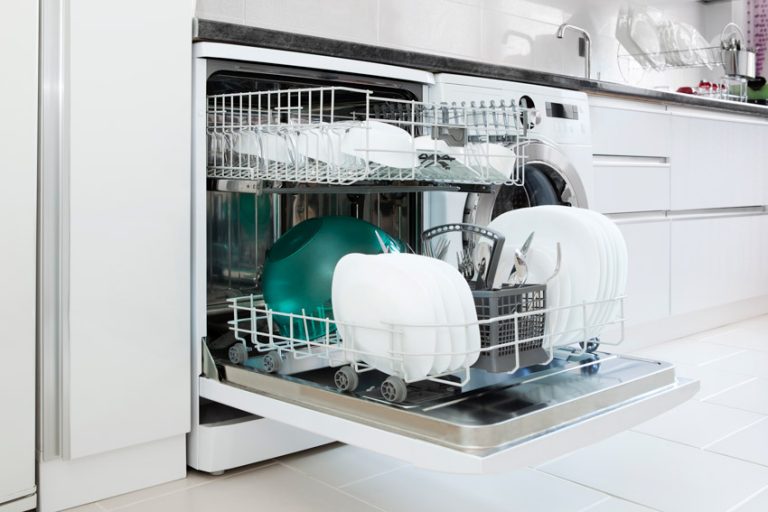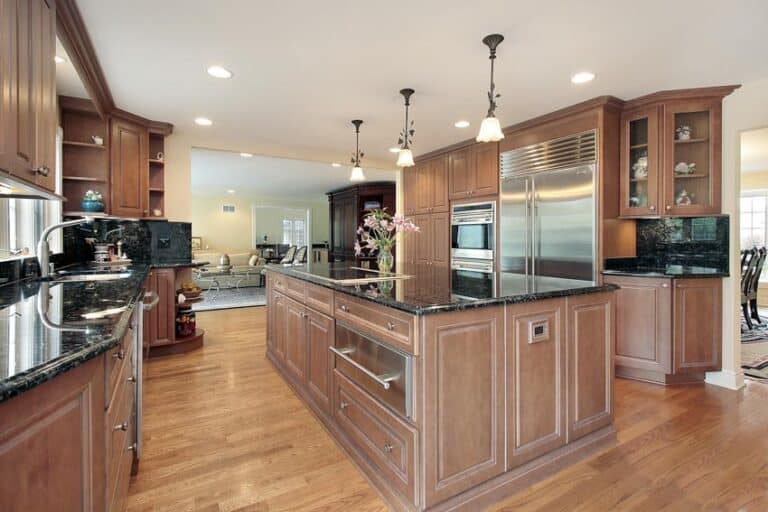Designer Tips For Choosing Solid Wood Kitchens Cabinets
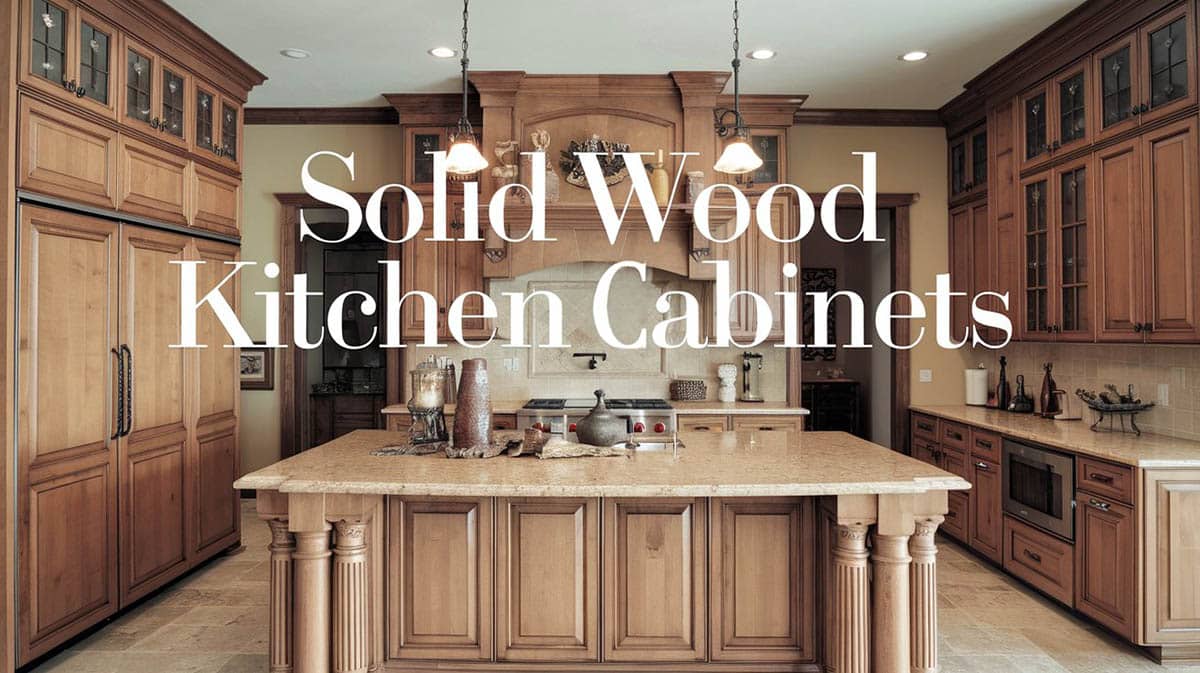
This guide showcases beautiful solid wood kitchens with custom cabinetry, high-end natural stone countertops, and elegant finishes. Hardwood cabinets are often constructed from alder, oak, cherry, maple, walnut, pecan, birch, or hickory. Solid wood cabinetry brings out natural characteristics that look stunning and are sure to increase your happiness while in your kitchen. Rustic and Industrial qualities combine to create a very interesting and gorgeous kitchen design.
Popular Wood Species for Kitchen Cabinetry
Let’s take a look at the most popular types of wood used in this cabinetry and some of its characteristics and benefits.
Maple
Characteristics – Smooth, closed grain with minimal visible pores; naturally creamy‑white to light tan.
Benefits – Extremely dense and hard, maple resists dents and accepts both clear finishes and painted coatings evenly.
Common Styles – Its clean grain suits contemporary and transitional kitchens, while painted maple is a favorite for classic Shaker and cottage looks.
Oak (Red & White)
Characteristics – Prominent cathedral grain in red oak; straighter, tighter “fleck” pattern in quartersawn white oak. Warm honey to pale‑gray undertones.
Benefits – Abundant, affordable, and structurally stable; open grain takes stain exceptionally well, allowing dramatic color shifts.
Common Styles – Red oak is a staple in traditional craftsman and rustic designs, whereas quartersawn white oak anchors modern organic and Scandinavian kitchens.
Cherry
Characteristics – Fine, satiny grain with minute pitch pockets; reddish‑brown heartwood darkens gracefully with age and sunlight.
Benefits – Moderate hardness paired with luxurious color depth; ages into a rich patina that many homeowners prize.
Common Styles – Ideal for formal, classic, or colonial kitchens, and often paired with raised‑panel doors and furniture‑style details.
Walnut
Characteristics – Dramatic chocolate heartwood streaked with lighter sapwood and subtle ribbon grain; naturally oily surface.
Benefits – Dimensional stability and exceptional workability; needs only a clear finish to showcase depth.
Common Styles – A go‑to for high‑end modern and mid‑century designs where designers want warmth without busyness.
Hickory & Pecan
Characteristics – Bold color variation from pale cream to mocha; large, rugged grain pattern with frequent knots.
Benefits – Among the hardest North‑American woods, hickory withstands heavy family use.
Common Styles – Perfect for farmhouse, lodge, and Southwestern kitchens where visible knots and contrast feel authentic.
Alder
Characteristics – Even, straight grain and consistent light brown tone that accepts distressing well.
Benefits – Softer than maple or oak, making it economical and easy to mill; readily takes glazes for “old‑world” effects.
Common Styles – Popular in rustic, Tuscan, and Mediterranean kitchens where hand‑scraping or worm‑holing is desired.
Birch
Characteristics – Close, mild grain similar to maple but with subtle wavy patterns; pale yellow‑white base color.
Benefits – Takes stain evenly, enabling it to mimic pricier cherry or walnut when budget is a concern.
Common Styles – Versatile across budget‑friendly traditional, coastal, and Scandinavian spaces.
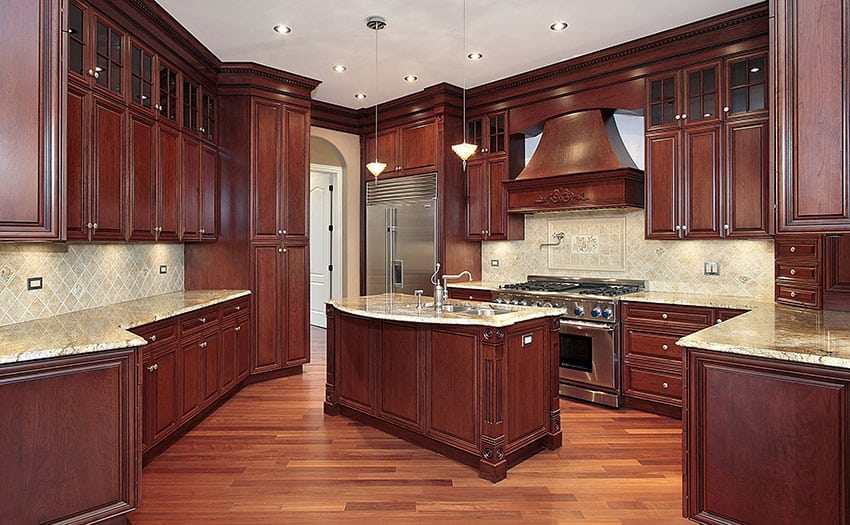
This full-sized kitchen used solid cherry wood cabinets all over, with a classic neo-classic inspired design. The overhead cabinets maximize the whole ceiling height, creating storage and display space. Because of the strong red undertones of the cherry wood cabinets, the countertop material used is yellow granite with matching yellow/cream ceramic backsplash tiles to help tone down the reds.
Designer Tips For Choosing Wood Cabinets
Celebrate Natural Grain Patterns – One of the greatest advantages of solid wood cabinetry is the uniqueness of every board. Instead of trying to mask the grain, highlight it by choosing a clear or lightly‑tinted stain that allows cathedral arches in oak or the straight, subtle stripes in maple to remain visible. Pair highly figured door and drawer fronts with quieter panels on the island or pantry to create a balanced, designer‑level composition.
Use Contrasting Species for Depth – Mixing two complementary hardwoods instantly elevates a kitchen. For example, upper cabinets in creamy quartersawn white oak juxtaposed with a walnut island give the room a custom furniture feel. Keep finishes in the same undertone family—warm with warm, cool with cool—so the contrast looks intentional rather than accidental.
Specify Furniture‑Grade Finishes – Ask your cabinetmaker for a multi‑step finishing process that includes hand sanding, a washcoat to seal pores, a stain or dye, and a catalyzed varnish topcoat. This regimen protects against moisture and cooking splatters while producing the silky tactile quality associated with high‑end millwork. Matte or low‑sheen topcoats are trending and help hide fingerprints.
Plan for Seasonal Movement – Solid wood expands and contracts with humidity changes. Designers compensate by using frame‑and‑panel construction and allowing minor reveals around doors and drawer fronts. In very dry climates, built‑in humidifiers—or at least a bowl of water near heating vents—can reduce shrinkage cracks in face frames.
Upgrade the Interiors as Well – Don’t stop at beautiful exteriors. Fully dovetailed drawers in hard maple, undermount soft‑close slides, and adjustable hardwood shelves reinforce the premium feel every time a cabinet is opened. Specifying finished interiors in the same species as the faces adds an extra layer of luxury that buyers notice.
Highlight Joinery Details – Exposed pegs, decorative splines, or contrasting inlays turn cabinetry into functional art. On Shaker‑style doors, a slightly proud mortise‑and‑tenon joint conveys authentic craftsmanship. These details are subtle but communicate quality more effectively than ornate mouldings alone.
Pair with the Right Hardware – Solid wood’s tactile richness deserves equally refined hardware. When I’m creating solid wood cabinet kitchens from alder or cherry, I like to use either an Oil‑rubbed bronze or an unlacquered brass as they tend to age gracefully alongside these varieties. On the other hand, if I’m using a lighter birch or hickory wood, I’ll tend to go with matte black or stainless pulls as they offer a crisp contrast that I love. For a bespoke look, choose oversized pulls on pan drawers and petite knobs on upper cabinets.
Mindful Lighting Matters – LED strip lighting under cabinets and inside glass‑front display cases accentuates the wood’s depth and variation. Warm‑white temperatures (2700‑3000 K) flatter the natural tones far better than cool‑white bulbs, making walnut appear muddy and oak look green.
Commit to Proper Maintenance – Any time you have wood you need to wipe up spills immediately with a damp, not wet, microfiber cloth and follow up with a dry towel. There’s also a twice a year maintenance routine that requires applying a high‑quality cabinet conditioner containing beeswax or carnauba to replenish natural oils. Avoid silicone‑based sprays—they create a film that attracts dust and can cloud the finish over time.
Think Long‑Term Sustainability – If eco‑credentials are important, request certifications such as FSC (Forest Stewardship Council) or SFI (Sustainable Forestry Initiative) for your lumber. Opting for domestic species like maple and oak reduces transport emissions and often provides better dimensional stability in North American climates.
Designs for Solid Wood Kitchen Cabinets
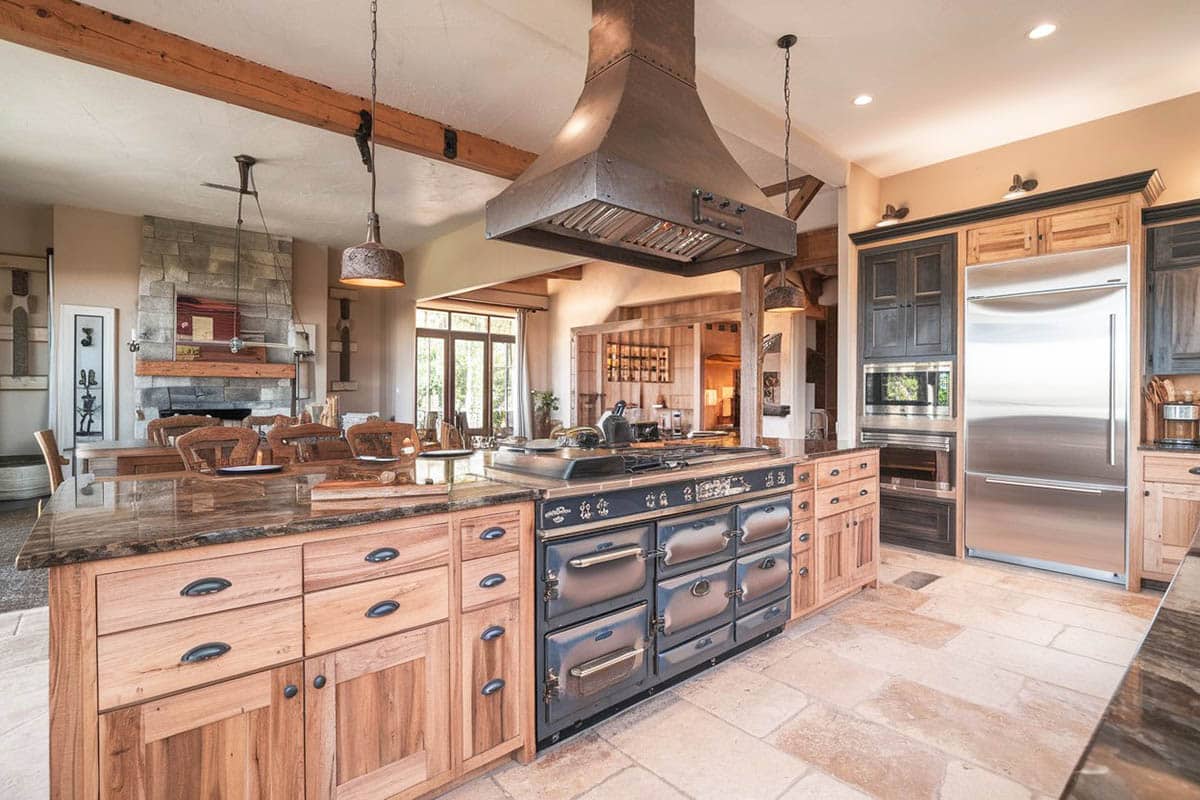
The cabinet design follows a simplified neo-classic template, with flute detailing and minimalist cornices, but with additional details that enhance its industrial appeal, such as the visible nailheads and the black drop cabinet pulls. Giving it its rustic appearance is its natural wood finish, topped with a matte coating to emphasize the natural grains and color of the wood.
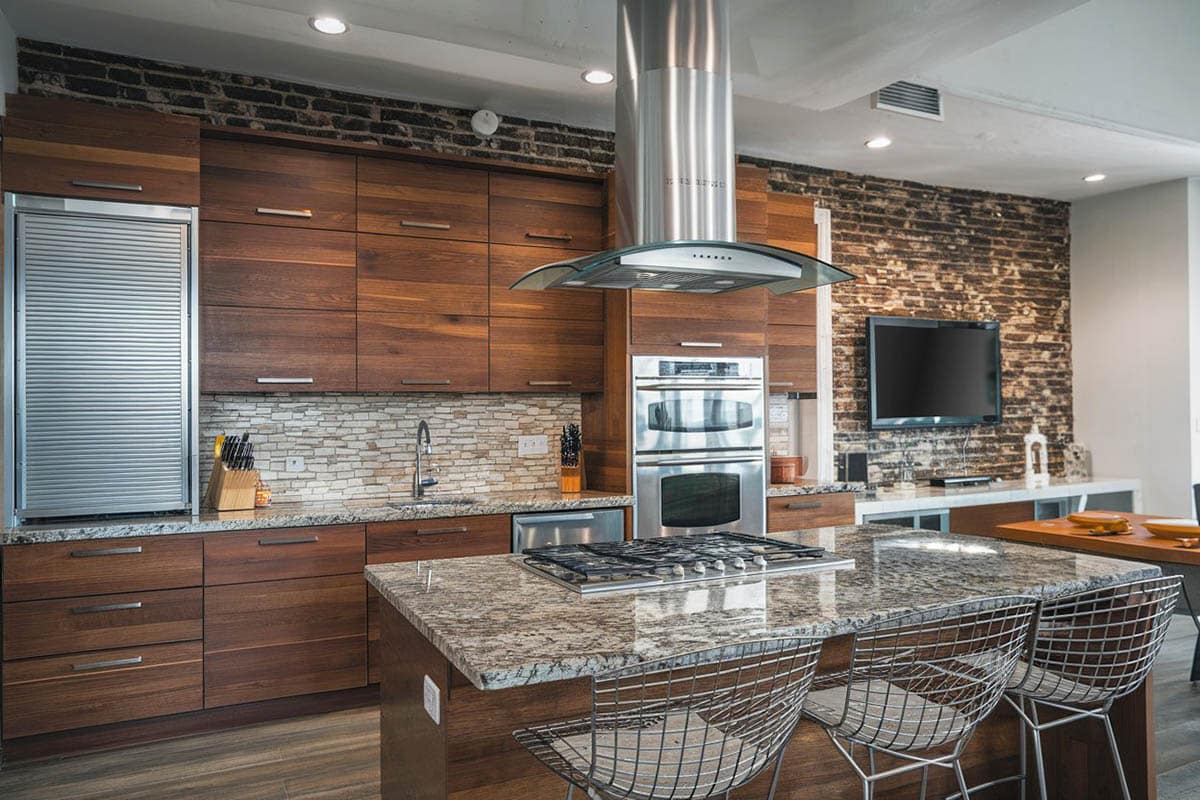
This contemporary style emphasizes horizontal lines by using horizontal solid teak wood planks for its cabinets. The teak wood lumber was varnished, enhancing its natural grains and color, then fixed with aluminum recessed drawer pulls for a more modern look. This modern space’s use of beige granite counters with a very polished surface adds a classic charm. The brick wall helps attract attention, making it the room’s focal point.
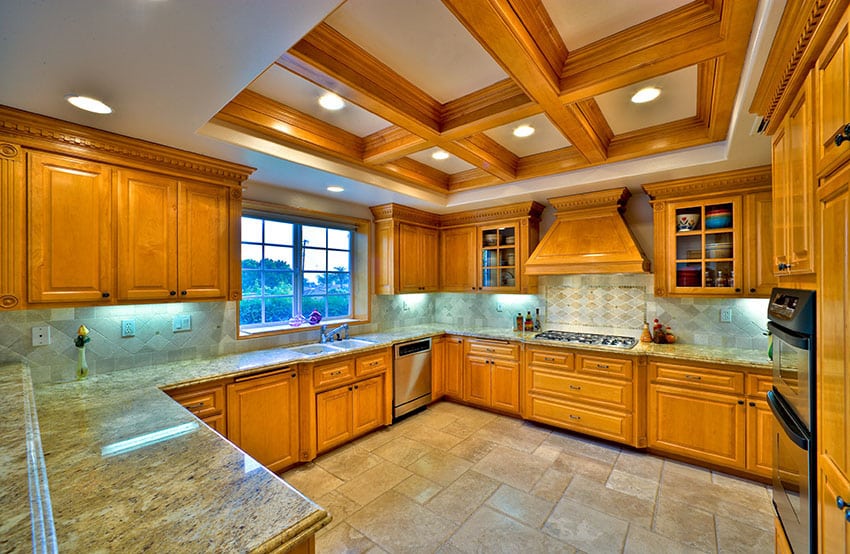
A full-size kitchen that has distinct yellow-orange tones due to its use of solid pine wood throughout the kitchen. The coffered ceiling uses pine wood, and even the cabinets use solid pine. The warm colors are celebrated in this design. The countertop uses yellow granite, with matching yellow/beige ceramic backsplash tiles, giving it a softer and lighter tone compared to the solid pine cabinets.
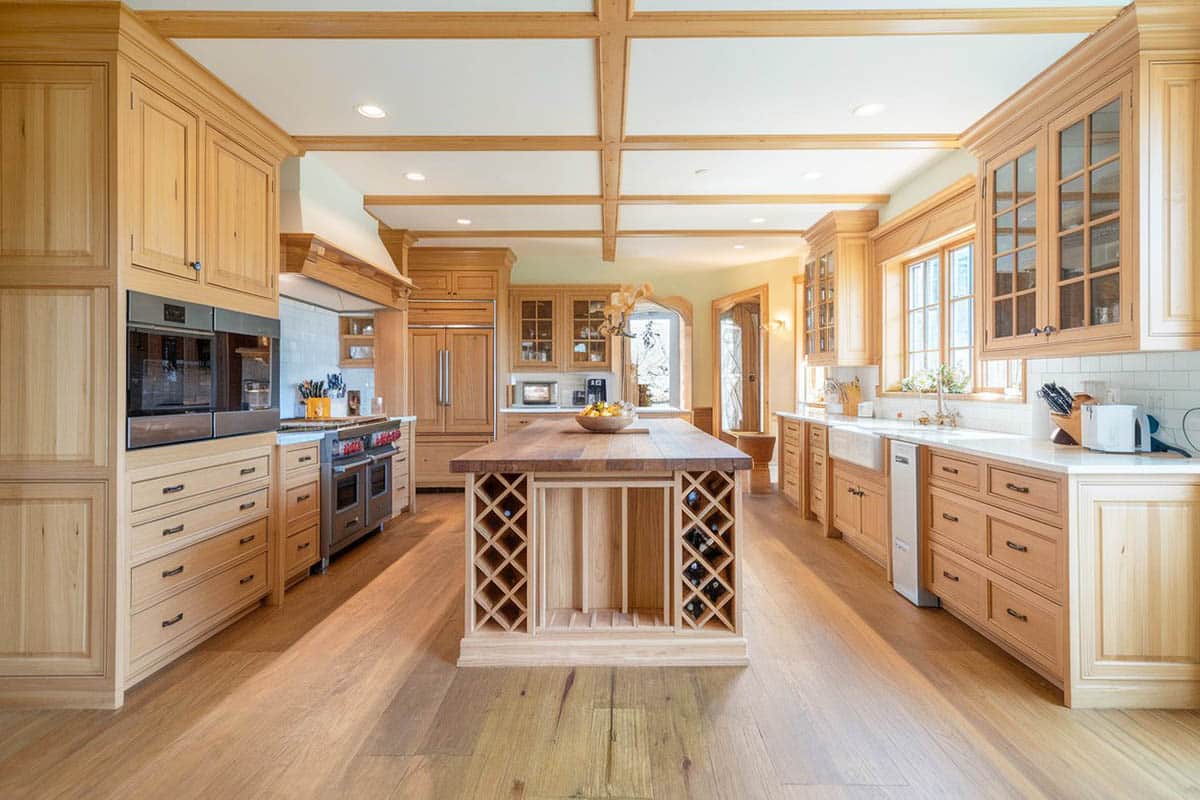
This space opts for an all-wood look, using solid pine wood and maintaining its natural color tone. This creates a bright and refreshing look for this full-sized kitchen. The wood is only lightly varnished with a matte top coat, making it look as natural as possible. For the countertop, white is the color of choice, while the island opts for an all-wood look, using a solid wood butcher’s block countertop.
Related Kitchen Design Galleries You May Like:
White Kitchen Designs – Dark Wood Kitchens – Cherry Wood Kitchens – 143 Luxury Kitchen Designs – Kitchens With Islands – Traditional Kitchen Designs

